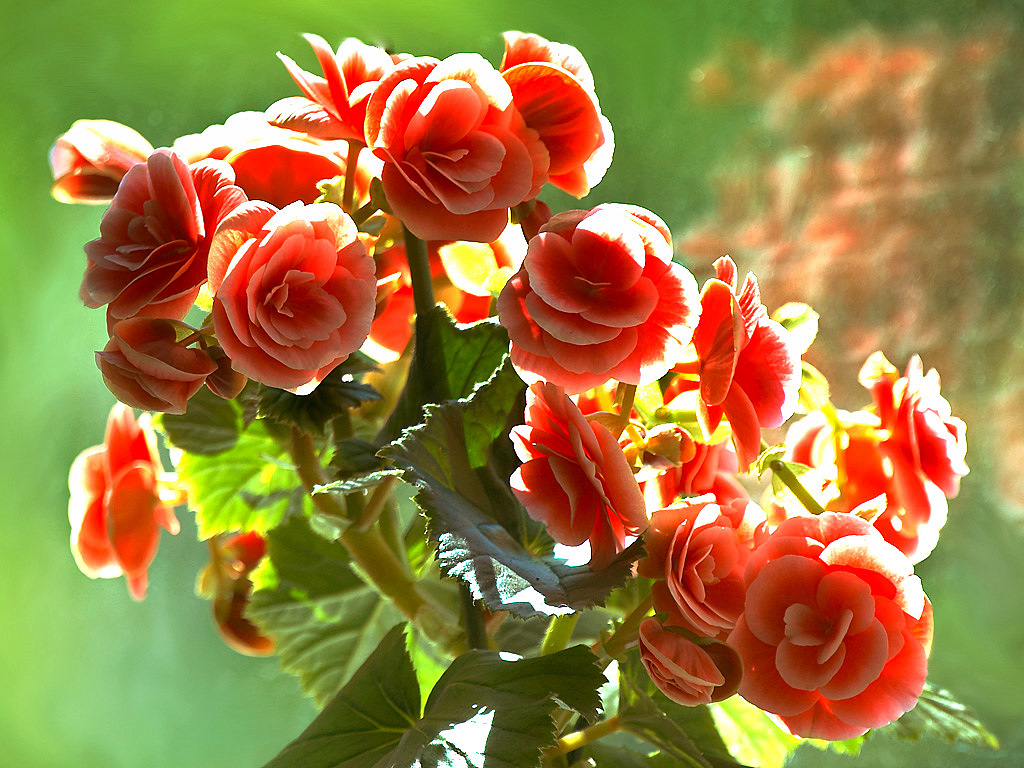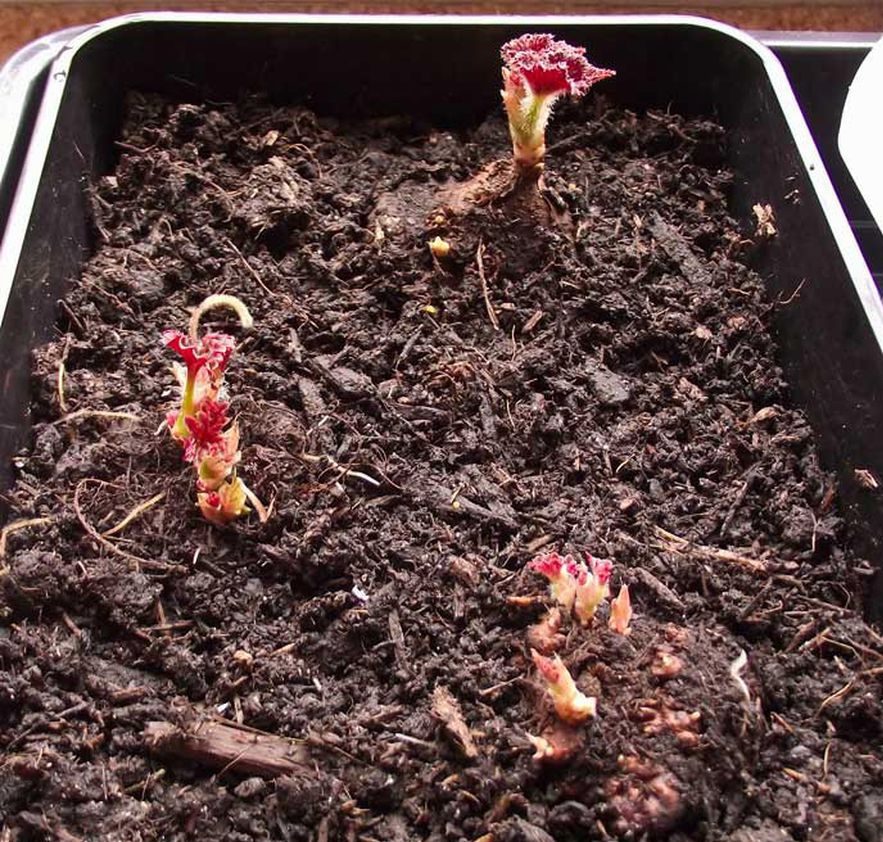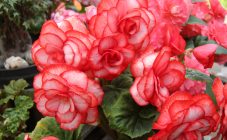Content:
Begonia is a popular ornamental plant that is ubiquitous. Such attention is due to the beauty of unique double flowers of various colors, as well as carved, bizarre shapes and rich emerald green leaves. There are many species that differ in color, in their ability to bloom, in the shape and size of flowers, but are conventionally divided into three main groups:
- evergreen;
- tuberous with falling leaves;
- bushy, taking time to hibernate.
The first type, as a rule, is ideal for home conditions, since it can bloom most of the year, but only with proper and competent care. The other two subspecies are usually planted in the garden.
Many questions regarding this flower arise from gardeners, for example, how to plant a begonia by cutting, what kind of land is needed for begonias and whether it is possible to plant begonias in open ground. Agricultural scientists have developed a program to promote proper plant growth.
Begonia flowers: planting and care at home
In order to grow a begonia healthy and strong, it is necessary to provide it with competent care, the main criteria of which are:
- Lighting. The plant requires exposure to bright and warm sunlight. This point especially applies to those plants that are in the flowering phase. But on hot summer days, it is better to move the plant a little in the shade to avoid burns on the leaves;
- Room temperature conditions. Begonia does not like high temperatures, as well as low temperatures. The optimum temperature is about 20 degrees Celsius;
- Air humidity. Begonia is a plant that does not tolerate dry air. That is why there is a need to maintain a sufficiently high level of humidity in the room. But it is better to save the plant from spraying, because often this leads to the formation of spots on the leaves;
- Watering. The soil under the begonia requires abundant watering, the main thing here is not to overdo it. Too much watering will rot the roots or other parts of the plant. The water must be settled. And it should be watered when the surface layer of the soil is dry per centimeter;
- Top dressing and fertilization. The first is used to enrich the soil with beneficial nutrients required by the plant. And fertilizers are aimed at improving the qualities of the plant itself: the color and size of leaves, flowers, the abundance and duration of the flowering period. Optimal top dressing - twice a month.
Correct plant growth is impossible without competent planting, because it is she who is the key to the healthy functioning of all plant systems.
Planting a plant is carried out in several ways:
- tuber and its division;
- cuttings;
- seeds.
How to plant begonia at home
To begin with, you need a competent choice of soil. The soil for begonias should be slightly alkaline, as well as loose, in order to ensure the maximum supply of plant roots with life-giving moisture.
If the planting method is a tuber, then the process should be carried out at the beginning of February by immersing the tuber in relatively moist, peat-filled soil. This method should be carried out strictly at room temperature, and in the future, moderate watering is carried out.Planting in a flower pot is carried out after the sprouts have reached at least five centimeters in length. Also, place the plant in a bright place, but not in direct sunlight, this will help proper development, but at the same time prevent burns.
Growing a seed-planted plant is no different from other methods. Care remains the same, as well as the planting conditions: room air temperature, fairly high ambient humidity and correctly selected soil.
Begonia: planting and care in open ground
All three methods are suitable for planting in open ground. How to plant begonia in open ground by breeding methods:
- Method of dividing tubers: especially suitable for greenhouse conditions. In this case, it is important not to flood the soil, but to produce only superficial, gentle spraying over the surface of the earth base. Also, during germination, the soil must be constantly kept moist, categorically avoiding drying out;
- Method of green cuttings: the preparation technology consists in laying out the mother tubers in boxes full of natural fertilization, with rich, saturated soil. It is necessary to ensure a comfortable temperature around the room, as well as optimal soil moisture. After the tubers sprout, they are carefully broken out and placed in cups. Such blanks are subsequently used as seedlings;
- The seed propagation method is especially effective if you want to cover large areas with begonia.
The general rule for all three methods: the gaps between the two plants should be at least 15 centimeters, and the seeds or tubers are introduced into the ground to a depth of about 5 centimeters.
Preparation of open ground and seedlings
You can grow begonia outdoors, but you need to prepare it for this. Since the recommended time for planting in the garden is June, the procedure for preparing the soil should be done in May. These activities include loosening and applying fertilizers and baits.
- fertilizers are mineral or chemical roots aimed at protecting plants from decay, the influence of pathogens and various kinds of diseases;
- groundbait is introduced into the soil to improve its properties, enrichment with vitamins. They are especially popular on the basis of potassium, as well as nitrogen, which contributes to the supply of oxygen to the soil and begonia roots;
- the use of a hydrogel is popular, the capsules of which are introduced into the soil to retain the moisture present in it.
In addition, cups with seedlings should be prepared. They should be taken outside every day for a month, gradually increasing the time of stay. Begonia seedlings need to get used to the outdoor climate.
Here you should pay attention to how to correctly take a shoot from a begonia. It is necessary to make a cut in the area of the knot, which is the place from which the young leaves break through. This should be done with a sharpened knife, but the use of scissors is undesirable. In addition, it is recommended to use extremely strong and healthy stems for propagation by cuttings, full of strength for further propagation.
After cutting, the cuttings are placed in water, also at room temperature. In addition, you can add a couple of drops of a growth accelerator or vitamin complex to it, which can be purchased in specialized stores.
Diseases and pests dangerous for begonias
Even with proper care and cultivation, problems can arise that cause great damage to the plant. And these problems lie in diseases and various kinds of parasites.Greenhouse plants are particularly affected.
The causes of diseases, as a rule, lie in improperly selected soil, which, upon contact with water and air, begins to release substances that are dangerous to all parts of the flower.
So, the signs of diseases that are a reference to immediate treatment:
- the smell of rot;
- the appearance of white or other plaque on the leaves;
- the appearance of deposits in the form of plaque on the ground;
- change in the color of the leaves;
- the appearance of various kinds of spots on the foliage;
- a large number of dry petals.
Treatment is selected according to symptoms, all drugs are sold in specialized agricultural stores. The dosage and methods of application are indicated on the package.
Among other things, the proximity to other plants affects the functioning of begonia flowers. That is why it is recommended to retreat a minimum safe distance of 15 cm, which will prevent violation of the root system. In addition, some plants are able to absorb large amounts of moisture and nutrients, as a result of which begonia will suffer from a lack of them.
It is best to plant the plant near flowers such as surfiniya, lobelia or iberis. In addition to the fact that they get along wonderfully, they form compositions that will complement the landscape design of the garden.
Neighborhood with small bushes will also be extremely beneficial due to the creation of partial shade, as a result of which the delicate begonia flowers will be protected from sunburn.
Currently, more and more designers honor begonia for its beauty and uniqueness, and are used in many projects and solutions.















